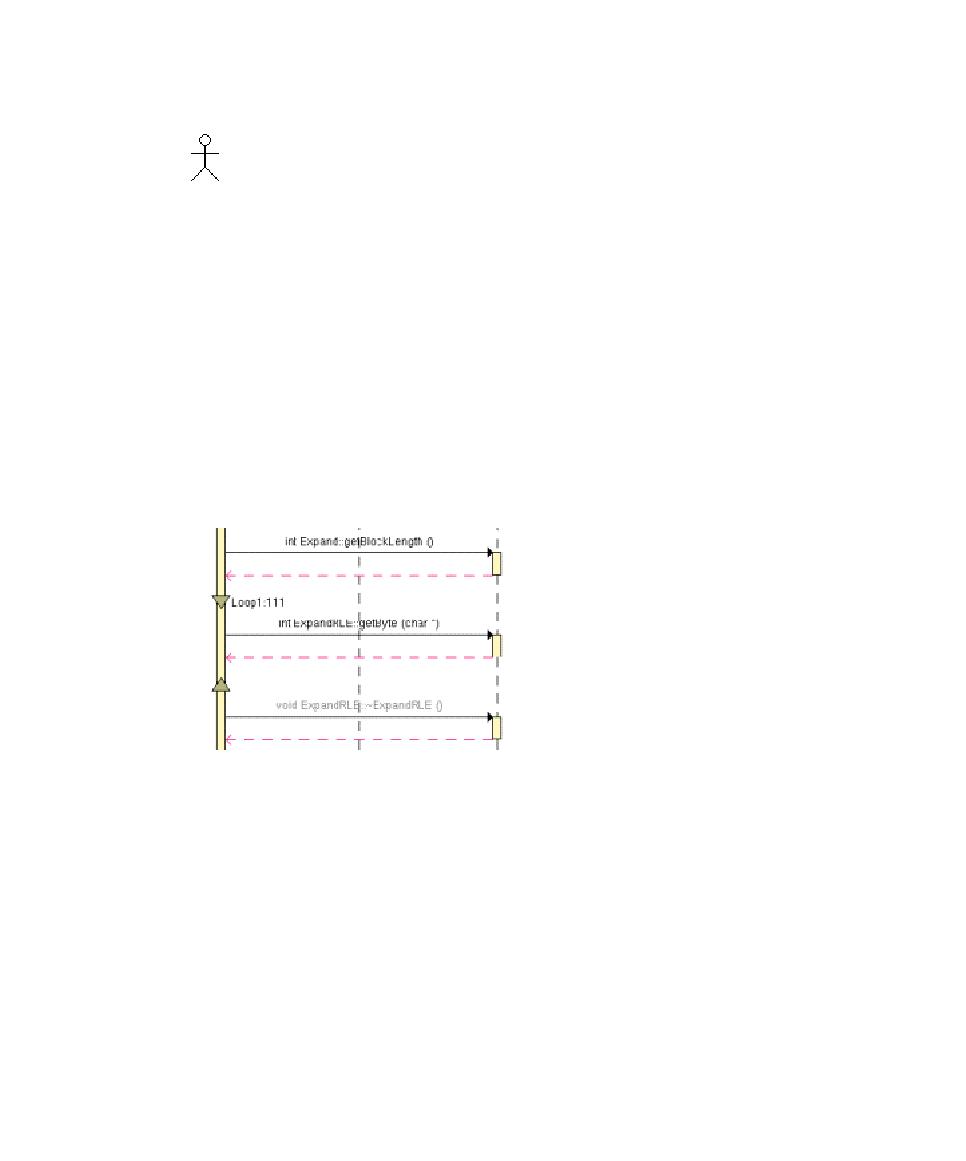
UML Sequence Diagrams
Test RealTime - User Guide
An actor usually appears as a "stick man" shape.
In models depicting software applications, actors represent the users of the system.
Examples include end users, external computer systems, and system administrators.
Naming Conventions
Each actor has a unique name that describes the role the user plays when interacting
with the system.
Loops
Loop detection simplifies UML sequence diagrams by summarizing repeating traces
into a loop symbol.
Note Loops are a Rational extension to UML Sequence Diagrams and are not
supported by the UML standard.
A loop is represented as shown below:
A tag displays the name of the loop and the number of executions.
The loop is linked to its source file. In the UML/SD Viewer, click a loop to open the
Text Editor at the corresponding line in the source code.
To configure Runtime Tracing to detect loops:
1.
From the Project Explorer, select the highest level node to which you want to
apply the option, such as the Workspace.
2.
Right-click the node, and select Settings... from the pop-up menu.
3. In
the
Configuration Settings dialog, select the Runtime Tracing node, and Trace
Control.
4.
From the options box, set the Automatic Loop Detection to Yes.
20
